![]()
Mother Tao
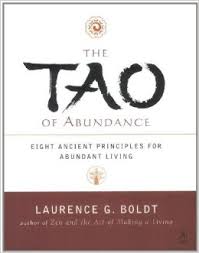
"The Eternal Tao cannot properly be equated with the Western notion of God as interpreted by orthodox Christianity, Islam, or Judaism. Still, there are many parallels with the notion of God as understood in the Western esoteric tradition. There are Greek philosophers, Christian and Jewish mystics, and Islamic Sufis, who speak of God in ways not unlike those Lao Tzu might use to refer to the Tao. Yet the Eternal Tao most closely parallels the Hindu notion of "Brahman.” Like the Tao, Brahman is recognized as transcendent and immanent, that is, as both prior to, or beyond, the realm of time and space, and manifest in it. In the Bhagavad-Gita, Brahman is described as 'beginningless, supreme: beyond what is and is not.' Chuang Tzu described the Tao as 'the changing changeless and changeless change.'"
The Eternal Tao of the Transcendent Mystery
"The Tao that is spoken of is not the Eternal nature of the Tao.
—Lao Tzu
Many are familiar with the saying attributed to Lao Tzu that 'those who know do not speak, and those who speak do not know.' Nevertheless Lao Tzu himself is purported to have written the five thousand characters we call the Tao Te Ching. We have as well, preserved in writing, the saying attributed to the Buddha, Jesus Christ, the Hebrew Prophets, Zarathustra Shiva, and Krishna, among others. Presumably, at least some of these 'knew.' Or are we to think that all of these 'teachers' were charlatans and all their 'students' fools?
The fundamental difficulty lies, not with the veracity of the scriptures or the realization of the teachers', but with the limitations of language communicate or express Eternal Reality. As Lao Tzu put it, 'The name that can be named is not the true name.' Name, words, and language are on symbols of the Reality they seek to represent. This is an obvious point; know that the word dog is a not the living, breathing animal. Yet in practice, and especially in dealing with more abstract concepts, we forget the difference between the word and the reality it stands for. Why then do bother with the scriptures and the teachers? In Picasso's statement, 'Art a lie that leads to truth,' we find a clue. The scriptures, like all great art, are not to be thought of as "truth" but as "lies that lead to truth.” So long as we cling to the literal meaning, the letter of what is being said, the Eternal Tao eludes us.
Yet if we can listen with an empty mind and open heart, we may hear the Word (Spirit, Tao) from which the words have originated. The words are gateways to the Mystery. Yet whether or not they swing open for us depend on how we approach them. Chuang Tzu described spiritual teachings and the words used to convey them as fishing baskets. 'Fishing baskets are employed to catch fish; but when the fish are got, the men forget the baskets... Words are employed to convey ideas; but when the ideas are grasped, men forget the words.' The point is not to collect baskets but to catch fish.
The Eternal Tao by any other name is still the unutterable Eternal. Taoists have no particular claim on the Transcendent Reality that all spiritual traditions have pointed to. Lao Tzu and Chuang Tzu were not members of any formal religion or philosophical school. Indeed, the chief articulator; of Taoist philosophy would not have thought of themselves as 'Taoists.' They were simply enlightened individuals around whom students gathered and whose sayings were in some way preserved. It was only much later that they were classified as belonging to the 'Tao Chia,' or Taoist school of philosophy.
While there are elements unique to Chinese culture and history within the teachings of Lao Tzu and Chuang Tzu, these texts are better understood as representations of what has been termed "The perennial philosophy" than as the scriptures of a particular religion or culture. In many of the world's great spiritual traditions, we find alongside the popular religion an esoteric or mystic teaching, reserved for a rather more dedicated few. (For example, within Taoism, the 'Tao Chiao,' or what might be termed 'popular Taoist religion and magic' developed alongside the esoteric Tao Chia, or Contemplative School of Taoist philosophy.)
The striking parallels and correspondences within the world's esoteric teachings-across cultures and historical eras-has led some scholars to view these teachings as local representations of a single universal, or perennial, philosophy. Like a single melody fashioned into numerous musical arrangements, the perennial philosophy takes on different inflections in different cultural contexts and historical periods, but is always recognizable as the same tune. As Thomas Aquinas put it, 'All that is true, by whomsoever it has been said, has its origin in the Spirit.' We could, for example, quite easily confuse the description of the Eternal, given by Jesus in the Gnostic text, The Secret Book of John, with Lao Tzu discoursing on the Tao:
I simply believe that some part of the human Self. . . is not subject to the laws space.
-Carl Jung
It is the invisible Spirit. One should not think of it as a god or like a god.
It is greater than a god, because there is nothing over it and no lord
above it. It is unutterable, since nothing could comprehend it to utter it.
It is unnameable, since there was nothing before it to give it a name.
The Eternal Tao cannot properly be equated with the Western notion of God as interpreted by orthodox Christianity, Islam, or Judaism. Still, there are many parallels with the notion of God as understood in the Western esoteric tradition. There are Greek philosophers, Christian and Jewish mystics, and Islamic Sufis, who speak of God in ways not unlike those Lao Tzu might use to refer to the Tao. Yet the Eternal Tao most closely parallels the Hindu notion of "Brahman.” Like the Tao, Brahman is recognized as transcendent and immanent, that is, as both prior to, or beyond, the realm of time and space, and manifest in it. In the Bhagavad-Gita, Brahman is described as 'beginningless, supreme: beyond what is and is not.' Chuang Tzu described the Tao as 'the changing changeless and changeless change.'"
Laurence G. Bolt, Tao of Abundance
Penguin Books (November 1999) pp. xvii-xix
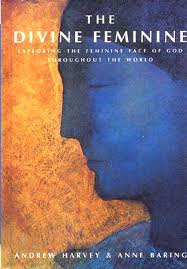
The Divine Feminine
Exploring the Feminine Face of God throughout the World
Godsfield Press UK and Conari Press USA 1996
Anne Baring and Andrew Harvey
THE DIVINE FEMININE IN CHINA
Mother of all Creation
Once, in China, as elsewhere, there was a Mother who was before
heaven and earth came into being. Her image was woven into the age-old beliefs of the people and the shamanic tradition which later
evolved into Taoism. In Chinese mythology The Mother goddess has many
names and titles. One legend imagined her as an immense peach tree
which grew in the Garden of Paradise in the Kun-Lun mountains of the
West and was the support of the whole universe. The fruit of this
marvellous and magical tree ripened only after three thousand years,
bestowing immortality on whoever tasted it. The Garden of Paradise
belonged to the Queen of the Immortals, the Royal Mother of the West,
whose name was Hsi Wang Mu, goddess of eternal life. Other myths
describe her as The Mother or Grandmother, the primordial Heavenly
Being, the cosmic womb of all life, the gateway of heaven and earth.
Taoism developed on this foundation.
More subtly and comprehensively than any other religious
tradition, Taoism (Daoism) nurtured the quintessence of the Divine
Feminine, keeping alive the feeling of relationship with the ground
of being as Primordial Mother. Somehow the Taoist sages discovered
how to develop the mind without losing touch with the soul and this
is why an understanding of their philosophy - China's priceless
legacy to humanity - is so important to us now.
The origins of Taoism come from the shamanic practices and
oral traditions of the Bronze Age and beyond. Its earliest written
expression is the Book of Changes or I Ching, a book of divination
consisting of sixty four oracles which is thought to date to 3000-
1200 BC. The complementary images of yin and yang woven into the
sixty four hexagrams of the I Ching are not to be understood as two
separate expressions of the one indivisible life energy: earth and
heaven, feminine and masculine, female and male, for each contains
elements of the other and each cannot exist without the other. In
their passionate embrace, there is relationship, dialogue and
continual movement and change. The I Ching describes the flow of
energies of the Tao in relation to a particular time, place or
situation and helps the individual to balance the energies of yin and
yang and to listen to the deeper resonance of the One that is both.
The elusive essence of Taoism is expressed in the Tao Te
Ching, the only work of the great sage Lao Tzu (born c. 604 BC.),
whom legend says was persuaded to write down the eighty-one sayings
by one of his disciples when, reaching the end of his life, he had
embarked on his last journey to the mountains of the West. The word
Tao means the fathomless Source, the One, the Deep. Te is the way the
Tao comes into being, growing organically like a plant from the deep
ground or source of life, from within outwards. Ching is the slow,
patient shaping of that growth through the activity of a creative
intelligence that is expressed as the organic patterning of all
instinctual life, like the DNA of the universe.”The Tao does
nothing, yet nothing is left undone.”The tradition of Taoism was
transmitted from master to pupil by a succession of shaman-sages,
many of whom were sublime artists and poets. In the midst of the
turmoil of the dynastic struggles that engulfed China for centuries
they followed the Tao, bringing together the outer world of
appearances with the inner one of Being.
From the source which is both everything and nothing, and
whose image is the circle, came heaven and earth, yin and yang, the
two principles whose dynamic relationship brings into being the world
we see. The Tao is both the source and the creative process of life
that flows from it, imagined as a Mother who is the root of heaven
and earth, beyond all yet within all, giving birth to all, containing
all, nurturing all. The Way of Tao is to reconnect with The Mother
source or ground, to be in it, like a bird in the air or a fish in
the sea, in touch with it, while living in the midst of what the
Taoists called the 'sons' or 'children'- the myriad forms that the
source takes in manifestation. It is to become aware of the presence
of the Tao in everything, to discover its rhythm and its dance, to
learn to trust it, no longer interfering with the flow of life by
manipulating, directing, resisting, controlling. It is to develop the
intuitive awareness of a mystery which only gradually unveils itself.
Following the Way of Tao requires a turning towards the hidden
withinness of things, a receptivity to instinctive feeling, enough
time to reflect on what is inconceivable and indescribable, beyond
the reach of mind or intellect, that can only be felt, intuited,
experienced at ever deeper depth. Action taken from this position of
balance and freedom will gradually become aligned to the harmony of
the Tao and will therefore embody its mysterious power and wisdom.
The Taoists never separated nature from spirit, consciously
preserving the instinctive knowledge that life is One. No people
observed nature more passionately and minutely than the Chinese sages
or reached so deeply into the hidden heart of life, describing the
life and form of insects, animals, birds, flowers, trees, wind,
water, planets and stars. They felt the continuous flow and flux of
life as an underlying energy that was without beginning or end, that
was, like water, never static, never still, never fixed in separate
things or events, but always in a state of movement, a state of
changing and becoming. They called the art of going with the flow of
this energy Wu Wei, not-doing (Wu means not or non-, Wei means doing,
making, striving after goals), understanding it as relinquishing
control, not trying to force or manipulate life but attuning oneself
to the underlying rhythm and ever-changing modes of its being. The
stilling of the surface mind that is preoccupied with the ten
thousand things brings into being a deeper, more complete mind and an
integrated state of consciousness or creative power that they named
Te which enabled them not to interfere with life but to"enter the
forest without moving the grass; to enter the water without raising a
ripple.”
They cherished the Tao with their brushstrokes, observing how
it flowed into the patterns of cloud and mist between earth and
mountain peak, or the rhythms of air currents and the eddying water
of rivers and streams, the opening of plum blossom in spring, the
graceful dance of bamboo and willow. They listened to the sounds that
can only be heard in the silence. They expressed their experience of
the Tao in their paintings, their poetry, the creation of their
temples and gardens and in their way of living which was essentially
one of withdrawal from the world to a place where they could live a
simple, contemplative life, concentrating on perfecting their
brushstokes in calligraphy and painting and their subtlety of
expression in the art of poetry. Humility, reverence, patience,
insight and wisdom were the qualities that they sought to cultivate.
The Taoist artist or poet intuitively reached into the secret
essence of what he was observing, making himself one with it, then
inviting it to speak through him, so releasing the dynamic harmony
within it. He imposed nothing of himself on it but reflected the
creative soul of what he was observing through the highly developed
skills that he had cultivated over a lifetime of practice. Through
the perfection of his art, he did not define or explain the Tao
which, as Chuang-Tzu said, cannot be conveyed either by words or by
silence, but called it into focus so that it could be experienced by
the beholder. The Tao flows through the whole work as cosmic
Presence, at once transcendent in its mystery and immanent in its
form. The distillation of what the Taoist sages discovered is
bequeathed to us in the beauty and wisdom of their painting and
poetry, and in their profound understanding of the relationship
between body, soul and nature, and the eternal ground that underlies
and enfolds them all.
Standing before one of the great Taoist paintings of the
T'ng or Sung dynasties or reading a poem by Wang Wei, we are
immediately transformed by them, able to let go of the things that
normally distract the mind and exhaust the body - the preoccupation
with the ten thousand things that the Taoists called"dust.” They put
us in touch with the center simply by relating us instantaneously to
the ground which unites everything. To rest in the quietness of mind
and humility of heart that the Taoist sage embodies, is to live in a
state of instinctive spontaneity that the Taoists named Tzu Jan - a
being-in-the-moment that can only exist, as in childhood, when the
effort to adapt to collective values and the need to accumulate
possessions, power or fame is of no importance. What exists is what
is. There is no need to change it by imposing the will. Change will
come about by changing the quality of one's own being. To feel what
needs to be said without striving to say it; to speak from the heart
in as few words as possible, to act when action is required,
responding to the needs of the moment without attachment to the
fruits of action, this was the essence of the Taoist vision. It was
essentially feminine, gentle, balanced, dynamic and wise.
The image of the primordial Mother was embedded deep within the soul
of the Chinese people who, as in Egypt, Sumer and India, turned to
her for help and support in time of need. She was particularly close
to women who prayed to her for the blessing of children, for a safe
delivery in childbirth, for the protection of their families, for the
healing of sickness. Their mother goddess was not a remote being but
a compassionate, accessible presence in their homes, in the sacred
mountains where they went on pilgrimages to her temples and shrines,
and in the valleys and vast forests where she could be felt, and
sometimes seen. Yet, like the goddesses in other early cultures, she
also had cosmic dimensions. Guardian of the waters, helper of the
souls of the dead in their passage to other realms, she was the Great
Mother who responded to the cry of all people who called upon her in
distress. She was the Spirit of Life itself, deeper than all knowing,
caring for suffering humanity, her child. Above all, she was the
embodiment of mercy, love, compassion and wisdom, the Protectress of
Life. Although she had many names and images in earlier times, these
eventually merged into one goddess who was called Kuan Yin - She who
hears, She who listens.
By a fascinating process which saw the blending of different
religious traditions, the ancient Chinese Mother Goddess absorbed
elements of the Buddhist image of the bodhisattva Avalokitesvara, the
Tibetan mother goddess Tara and the Virgin Mary of Christianity,
whose statues were brought to China during the seventh century AD.
The name Kuan Yin was a translation of the sanscrit word
Avalokitesvara and means"The One Who Hears the Cries of the World.”
At first, following the Mahayana Buddhist tradition, this
compassionate being was imagined in male form, but from the fifth
century AD., the female form of Kuan Yin begins to appear in China
and by the tenth century it predominates.
It was in the far north-west, at the interface between
Chinese, Tibetan and European civilizations, that the cult of Kuan
Yin took strongest root and it was from here that it spread over the
length and breadth of China and into Korea and Japan, grafted onto
the far older image of The Mother Goddess. Every province had its
local image and its own story about her. Taoist and Buddhist elements
were fused, creating an image of the Divine Feminine that was deeply
satisfying to the people. By the 16th century, Kuan Yin had become
the principal deity of China and Japan and is so today. Robed in
white, she is usually shown seated or standing on a lotus throne,
sometimes with a child on her lap or near her for she brings the
blessing of children to women.
Chinese Buddhist texts describe her as being within a vast
circle of light that emanates from her body, her face gleaming
golden, surrounded with a garland of 8000 rays. The palms of her
hands radiate the colour of 500 lotus flowers. The tip of each finger
has 84,000 images, each emitting 84,000 rays whose gentle radiance
touches all things. All beings are drawn to her and compassionately
embraced by her. Meditation on this image is said to free them from
the endless cycle of birth and death.
Two Chinese descriptions of Kuan Yin bring her to life, the
first from the Buddhist Lotus Sutra which imagines her as a cosmic
being devoted to saving the world through her wisdom and compassion,
the second from the 16th century:
Listen to the deeds of Kuan Yin
Responding compassionately on every side
With great vows, deep as the ocean,
Through inconceivable periods of time,
Serving innumerable Buddhas,
Giving great, clear, and pure vows...
To hear her name, to see her body,
To hold her in the heart, is not in vain,
For she can extinguish the suffering of existence...
Her knowledge fills out the four virtues,
Her wisdom suffuses her golden body.
Her necklace is hung with pearls and precious jade,
Her bracelet is composed of jewels.
Her hair is like dark clouds wondrously
arranged like curling dragons;
Her embroidered girdle sways like a phoenix's wing in flight.
Sea-green jade buttons,
A gown of pure silk,
Awash with Heavenly light;
Eyebrows as if crescent moons,
Eyes like stars.
A radiant jade face of divine joyfulness,
Scarlet lips, a splash of colour.
Her bottle of heavenly dew overflows,
Her willow twig rises from it in full flower.
She delivers from all the eight terrors,
Saves all living beings,
For boundless is her compassion.
She resides on T'i Shan,
She dwells in the Southern Ocean.
She saves all the suffering when their cries reach her,
She never fails to answer their prayers,
Eternally divine and wonderful.
from Kuan Yin by Martin Palmer, Jay Ramsay, and Man-Ho Kwok
The Divine Feminine: Mother Of All Creation
Anne Baring and Andrew Harvey
Tao Te Ching: "Doorway of the Mysterious Female ... is there within us all the while"
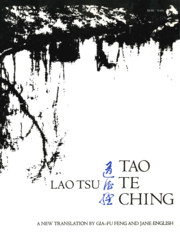
"The reader will notice in the many passages where Lao-tzu describes the Master, I have used the pronoun 'she' at least as often as 'he.' The Chinese language doesn't make this kind of distinction; in English we have to choose. But since we are all, potentially, the Master (since the Master is, essentially, us) I felt it would be untrue to present a male archetype, as other versions have, ironically, done. Ironically, because of all the great world religions the teaching of Lao-tzu is by far the most female.”- Stephen Mitchell
The Feminine Tao
Introduction
"The 'Tao Te Ching' (pronounced Dao De Jing), literally, 'The Book of
the Way and its Virtue,' is one of the major source texts in Chinese
Taoism. It was probably compiled in the 6th-5th c. B.C.E., as a
collection of teachings, for the most part passed down from a much
older, oral tradition. The name of its faithfully nameless author,
Lao-tzu (pronounced Laozi), means simply 'old master.' According to
Ellen M. Chen's translation, 'of all the ancient classics still
extant, the Tao Te Ching alone draws its inspiration from the female
principle.' Its profound inclusion of the feminine divine is in fact
essential to its core teaching. As Karyn Lai points out in an
introduction to the TTC's environmental philosophy: its basic
tenor 'is that a more complete life for all forms of existence can be
achieved only through a full appreciation of the connectedness of all
beings.'
This spirit of diversity as a wellspring of spirituality, may be
aided and abetted, in any study of the Tao Te Ching, by utilizing as
many different translations as is comfortable. Allowing these
translations to inform each other is a good way to catch on to the
various spiritual implications and unworded images, suggested but not
spelled out in the ancient Chinese text.
In her essay, Daode Jing in Practice, Eva Wong comments: 'In the
Daoist tradition, study and practice are inseparable: to study is to
practice and to practice is to study. Understanding a text can help
us practice its teachings; practicing its teachings can help us
understand its meanings.'"
The Feminine Tao
www.earlywomenmasters.net/tao/index.html
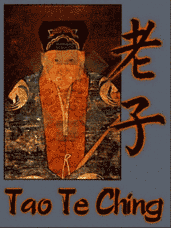
The Tao of Laozi (Lao Tzi)
Journal of Humanistic Psychology, Vol. 43 No. 1, Winter 2003
'Tao' is a Chinese word meaning 'way', 'way of Heaven', 'Path' or 'road' or 'method'. It indicates a line or principle of conduct. There is no proper English term for 'Tao'. It means the 'Eternal Being'.
The Founder of Taoism was Lao-Tze. Lao-Tze was born in 604 B.C. in the village of Chu-Jhren, in Li country, belonging to the Ku province of the State Chu. He was born under the plum tree (in Chinese 'Li'). He adopted it as his surname. The hair of the head was white when he was born. Hence he was called Lao-Tze (old boy) or philosopher, one who is child-like even when old.
He was popularly called Lao-Tze. His name was Er (ear). He was called Tan after his death. 'Tan' means 'long lobe'. He had peculiar long ears. His appellation was 'Po Yang' or"count of positive principle.” He was a keeper or recorder of the secret Archives in the Royal court of Chore. He was a State Historian.
Lao-Tze says: Tao is one. It was in the beginning. It will remain for ever. It is impersonal, eternal, immutable, omnipresent, bodiless, immaterial. It cannot be perceived by the senses. It is nameless. It is indescribable.
It is the first cause from which all substances take their origin and all phenomena flow. The great Tao is all-pervading. All things depend on it for life. It is The Mother of all phenomena, of heaven and earth. It existed before the Personal God. It is the father of God. It is the producer of God. It is the originator of heaven and earth. It is The Mother of all things.
You will find that there is an aroma of Indian Vedantic philosophy in the teachings of Lao-Tze.
Tao is everywhere. It is in the ant. It is in the grass. It is in the earthen-ware vessel. It is in excrement. It is in the highest place but is not high. It is in the, lowest place, but is not low. It is in ancient times, but itself is not ancient. It is in old age but itself is not old. It is everywhere, but appears to be nowhere.
Tao is the sanctuary where all things find refuge. It is the good man's priceless treasure. It is the guardian and saviour of him who is not good. (Sri Swami Sivananda)
Laozi believed that females are The Mothers of all things and all human beings. In accordance with Dao, which generates everything, females are those that produce all things. Without females or mothers, there is nothing else in the world.
The mystery of the valley is immortal;
It is known as the Subtle Female.
The gateway of the Subtle Female
Is the source of the Heaven and Earth. (Chapter 6)
In another chapter, Laozi observed:
The beginning of the world
May be regarded as The Mother of the world.
To apprehend The Mother,
Know the offspring.
To know the offspring
Is to remain close to The Mother,
And free from harm throughout life. (Chapter 52)
As per Daoist humanism, females, instead of males, are usually highly regarded in his writing:
Know the male
Hold to the female;
Become the world's stream.
By being the world's stream
The Permanent De (or humanism) will never leave.
This is returning to Infancy. (Chapter 28)
From this perspective, it is easy to see that femininity and mothering were highly valued by Laozi. Simply speaking, nothing in the world is as important as women and mothers. If many philosophical and religious ideas tend to maintain male superiority or dominance, directly or indirectly (e.g., Confucianism; Hinduism; Christianity, including Mormonism; Islam; Chauvinism; or Freudianism), Daoism differs because females play a more important role in humanism than males. This point may not have been well understood in modern feminist research (see Laughlin & Wong, 1999). Perhaps philosophically or religiously, Laozi could be seen as one of the first proponents of feminism in human history.
Journal of Humanistic Psychology, Vol. 43 No. 1,
Winter 2003 64-85
"The reader will notice in the many passages where Lao-tzu describes the Master, I have used the pronoun 'she' at least as often as 'he.' The Chinese language doesn't make this kind of distinction; in English we have to choose. But since we are all, potentially, the Master (since the Master is, essentially, us) I felt it would be untrue to present a male archetype, as other versions have, ironically, done. Ironically, because of all the great world religions the teaching of Lao-tzu is by far the most female.”
From the introduction to the translation
by Stephen Mitchell
Concepts in other cultures that correlate with Qi
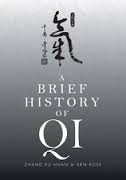
"The ancient Hindus wrote of prana, the invisible 'breath of life' that they cultivated through Yoga. Ancient Greeks described a concept which in several important aspects parallels the Chinese notion of qi with the word 'pneuma.' Like the Chinese qi, this Greek word is often translated into English as 'breath'— with similar misleading results. The Greek pneuma, like the Chinese concept of qi, was a complex idea that blended spiritual and material aspects of the vital essence of life into a comprehensive description of that without which life itself could not exist...
Also like qi in ancient China, pneuma was an important concept in ancient Greek medicine. It too was the substance with which people filled their lungs ('pneumon' in Greek). But like its Chinese counterpart, the Greek pneuma represented an even more vital substance. It took on the meaning of the breath of life, breathed into mortals by the gods.”
Yu Huan Zhang & Ken Rose, A Brief History of Qi
Trade Paperback Book, 2001, pp. 15-16
"There must be some primal force, but it is impossible to locate. I believe it exists, but cannot see it. I see its results, I can even feel it, but it has no form.” (Zhuang Zi, Inner Chapters, Fourth Century B.C.E.)
"Qi means air, breath, or vapour—originally the vapour arising from cooking cereals. It also came to mean a cosmic energy. The Primordial Breath is a name of the chaos (state of Unity) in which the original life force is not yet diversified into the phases that concepts of yin and yang describe.” (Kathleen Kuiper, The Culture of China, 2011, p. 103)
"Qi likewise is difficult to translate. The dictionary gives many meanings, including 'air', 'gas' and 'vapour'. To the early Chinese naturalists, this term seemed to bear some resemblance to what we now call 'matter-energy', corresponding in a way to the pneuma of the ancient Greeks and the prana of the ancient Hindus.” (Peng Yoke Ho, Li, Qi and Shu, 2002, p. 3)
"In every part of the world, already thousands of years ago, humans have speculated about some kind of life force. In China it is called qi (also spelled chi), in India prana, in ancient Greece pneuma, in Latin spiritus, and in Hebrew ruach. There are hundreds of life energy beliefs, which have many similarities. This encyclopedia presents and explains them all, showing their similarities, but also their differences.” (Book Description: Life Energy Encyclopedia: Qi, Prana, Spirit, and Other Life Forces around the World, Stefan Stenudd, 2009)
"In Eastern philosophy qi is also called prana and it is known that the body's natural production of prana increases through the raising of the kundalini energy via meditation and a yogic lifestyle. Because qi or prana runs on the neutrino level, it is very difficult to detect as qi is what fills the 99% of space in each atom.” Prof. Lu Zuyin, Scientific Qigong Exploration: The Wonders and Mysteries of Qi, 1997
"The scientific experiments introduced in this book (Scientific Qigong Exploration) opens up new doors for great scientific breakthroughs in the 21st century... Dr. Yan Xin's experiments indicate that our consciousness carry tremendous energy and information, and that qi energy can change DNA and RNA—an implication that human beings can completely redesign their life toward better health, longevity and even immortality. This is a book any visionary scientists and social scientists must read. Great minds will eventually be able to see the implications and set to work on unearthing the treasure of qigong for the common good.” Jing Lin, Associate Professor, University of Maryland
"The experiments themselves are kind of dry reading but the implications they have on the potential for human growth are staggering. And the scientists who conducted these experiments are not people who are easily swayed by whimsical tales and flights of fancy, they are hard core scientists and physicists who are among the top the Chinese have to offer.” Anthony D. Statler
Qi: "When it goes into man's chest, the man becomes a sage"
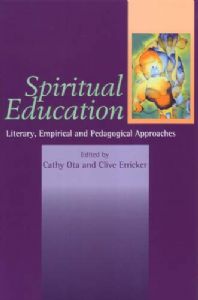
"What, if any, are the equivalent Chinese terms for 'spirit' and 'spirituality'? A brief consideration of this question provides some helpful background for understanding how the spiritual dimension of human life is conceptualized and expressed by the Chinese.
Etymologically, in Chinese 'it is probably qi that bears the closest resemblance to 'spirit' (Adler 1997). A simple comparison shows the basis for this judgment. According to Barnhart, 'The original English use of spirit are mainly derived from passages in the Vulgate, in which Latin spiritus is used to translate Greek pneuma and Herbrew ruah' (1999; 1047). Holl gives the original meaning of ruah as 'air in movement' (1998: 8), while Adler highlights 'the analogous words in Hebrew, classical Greek, and Sanskrit (ruach, pneuma, and prana) that similarly cover the range of meanings from wind and breath to spirit' (1997).
The original pictograph for the Chinese character qi consists of three roughly horizontal strokes representing parallel layers of clouds arising from the condensation of moisture. It thus denotes 'air, vapour, gas' (Lindqvist 1991: 172). Later, the pictograph for rice was inserted under the original strokes, probably to show the 'vapors' rising out of a saucepan of boiling grain (172). This composite pictograph became the present character for qi. Pas and Leung speculated that, in a natural extension of meaning, qi as vapours came to mean 'breath' (which in winter is very similar to steam). Because in many cultures 'breath' signifies 'life,' a further extension became understandable: 'vital spirit, vitality, vital breath, life energy, vital force' (1998:78). They stress the parallels qi has in other traditions, particularly regarding the fact that the same vital principle or energy that qi represents is supposed to course through both the cosmos and individual beings, quoting Mair's judgment that 'The same concept exists in the Indian tradition as prana, in the Greek tradition as pneuma, in the Latin tradition as spiritus, and in the Hebrew tradition as ruah' (Mair, quoted in Pas and Leung 1998:78).
Qi is a central term in both Daoism and Confucianism, the two dominant Chinese intellectual traditions influencing all aspects of life, from health to medicine, martial arts, fengshui (geomancy), to literature and various fine arts. A multiplicity of terms have been used for translating qi into English, including 'ether, elan vitale or vital force, humour, breath or psychosomatic force' (Lai 2001:446), but often it is simply left untranslated. Interestingly, qi is seldom translated as spirit, suggesting that, despite the commonalities, there are also important differences between the two.
In its most generalized sense, qi denotes 'the primal stuff out of which everything else in the universe condenses' (Van Norden 1996: 227). Its all-encompassing nature is exemplified by the following extracts from the ancient classis Guanzi:
'the qi of all things changes and thus becomes life'; 'when qi goes to the ground, grain grows; when it goes into the heavens, there emerge constellations; when it floats in the air, it becomes ghosts and spirits; when it goes into man's chest, the man becomes a sage,' and 'therefore when there is qi, there is life; when there is no qi, there is death.' (quoted in Tang, 1991:21)"
Cathy Ota, Clive Erricker, Spiritual Education
Sussex Academic Press, pp. 154-55
"The qi must have something to do with the pneuma mentioned by Jesus"
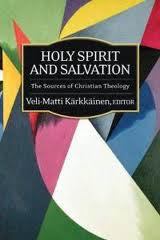
Spirit and Qi
"In Christianity the Spirit is God permeating God's own creation. According to the creation study in the Hebrew Scriptures, 'a wind [spirit] from God swept over the face of the waters' in the beginning of creation (Gen. 1:2).. Hence, the primary mission of the Spirit has to do with life, creating it, sustaining it and directing it towards its future destiny. The Spirit is the source of life, not only of the present life but of eternal life as well. The Spirit is within creation, but is not conditioned by creation.
Chinese theologians Chang Chun-shen and C. S. Song suggest that this Sprit is what the Chinese would call qi—air, breath and spirit. According to the teachings of Confucianism and Taoism, qi is the material origin of all things; it is at the same time the origin of the life-force and energy moving into action. Or rather it is in itself equipped with life-giving properties and energy for action. The following is a standard expression of qi:
Ch'i [qi] fills the space between heaven and earth. Heaven and earth themselves, all things between heaven and earth, are all constituted by ch'i. Because of ch'i everything between heaven and earth moves, changes, and functions. It itself moves and moves all things. It is the subject of changes and movements and the origin that causes them. Human beings and animal-plant life also consist of ch'i. The human body is filled with ch'i which comes and goes. The ch'i within the human body and the ch'i outside it are the same ch'i and interpenetrate one another.
The qi must have something to do with the pneuma mentioned by Jesus. 'The pneuma [air, wind or spirit] blows where it chooses, and you hear the sound of it, but you do not know where it comes from or where it goes' (Jn 3:8). This is the mystery of pneuma and qi. It is wind as well as spirit. It moves and works like wind, blowing where it wills. This actually is similar to the Old testament concepts of 'soul' and 'breath' and 'soul'.”
Zhihua Yao, In the Power of the Spirit
Tripod 91 (Jan.-Feb. 1996), pp. 29-30
"Chi serves as the mysterious bridge between God and humanity.”

"Chi and the Christian understanding of the Holy Spirit share many commonalities. The Old Testament ruach and the New Testament pneuma carry the same ambiguity of multiple meanings, as does Chi, such as 'breath, air, wind or soul.' The word ruach has its etymological origin in air, which manifests itself in two distinctive forms; that of wind in nature and that of breath in living things. Because God as Spirit manifests herself as wind, or ruach, she is also Chi...
The cosmic dimension of Spirit is expressed in the idea of Chi, the vital energy which is the animating power and essence of the material body. The Spirit is also breath in living things. Breath is none other than wind, the movement of air or ether in the living, which is also Chi. While wind brings nature to life, breath makes the living alive. In the Hebrew Scriptures, God's breath is identified with life-giving power (Genesis 6:17, Num. 16:22, Ps. 104:29; Eccles. 3:1, Isaiah 37:6 etc.) and the Spirit becomes a life-giving power in the birth of Jesus (Matthew 1:18-20; Luke 1:15, 35, 37). In these passages, we notice that Chi, the vital energy, which has her origin in God, is the life force of living creatures. Human beings live and die because of the breath of life, Spirit or Chi, which penetrates our entire bodies. If healing is associated with the circulation of Chi, it is certainly true that the Spirit as breath is not only the power that sustains and restores life but also the power that changes and transforms all living things. Therefore, it is important to allow Chi not only to heal our physical bodies, but also our mental and spiritual entities as well. All these concepts emanate the life giving Spirit which is in all things and is the Spirit God has provided us. It is the spiritual energy which inhabits all of us as it is an utterly dynamic living and vital force. Chi serves as the mysterious bridge between God and humanity.
Chi, like pneuma, is translated as 'breath,' 'energy,' 'ether' or 'material force,' but is better rendered as 'matter-energy.' Chi is pervasive in the universe, giving rise to all things, endowing them with life and energy. It is a substrative psycho-physical reality underlying the world as it appears to our consciousness and corresponding in a way to the pneuma of the ancient Greeks. The Great Ultimate is full of Chi. Chi is not only all-pervasive reality but also undifferentiated singleness. According to this concept of Chi, the distinction between wind and breath is simply one of modes of manifestation. Chi is the essence of all life and all existence. Without Chi, life does not exist and if there is no Spirit, nothing living can exist. God as the life-giving spirit is the proper source of life and strength. In a derivative sense, ruach also denotes the life-force of the individual (Judges 15:19) and of the group (Num. 16:22).
Chi is the ultimate reality and is immanent in all things. Because all things in the universe consists of Chi, no being can exist apart from Chi. There is no place where there is no Chi; the sky, the sun and the moon are accumulated Chi. This notion of the Spirit as Chi assists us in reaffirming the idea of divine immanence or Immanuel, God is with us. Due to interchangeability of Chi and Spirit, the concept can be captured in the combined term of Spirit/Chi. This means that God is in all things, which allows one to realize that everything exists in God and that everything exists because of God.
Andrew F. Walls, Akintunde E. Akinade, A New Day
Peter Lang Pub Inc (Jun 15 2010) pp. 293-95
Question: "Is the Kundalini the same force that exists all around us as the Chinese call Chi?”
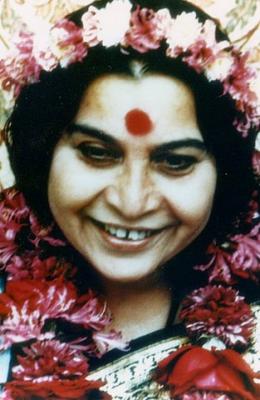
Shri Mataji Nirmala Devi was
Christian by birth, Hindu by
marriage, and Paraclete by duty.
"The Paraclete represents direct,
intimate divine intervention,
supporting and teaching
believers and challenging the
world, as Jesus did.” (D. Stevick
Jesus and His Own, 2011, 290)
Lao-Tse is the man who talked about this thing; he's the one who told them about Kundalini and they don't know who is Lao-Tse? Especially in America, I don't know what sort of Chinese live here.
it's such a great source of knowledge, and what they have said is a perfect thing.
But everything gets integrated in Sahaja Yoga. All the knowledge, all the scriptures, everything gets integrated. Absolutely integrated because out of light you see the truth in all of them. There is truth in everything, there is truth in every religion.
But religion now has become money-oriented, or also power-oriented, so it's gone off.”
The Paraclete Shri Mataji
Public Lecture, New York, USA, 1999
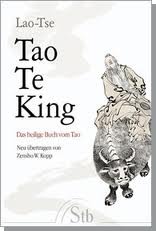
"He dwells in inner abundance
and not in outward appearance.
He does not cling to the shell
and lives solely from the essence (38)
In the Tao Te King, Lao-tse constantly emphasises how foolish it is to strive for honour, riches and esteem. Wisdom consists in becoming without desires and living modestly in natural simplicity. In the stillness of inner seclusion the wise one experiences his oneness with the Tao, the eternal mother of the universe. As its child, he trusts in its support and security beyond death since:
He who has found his mother,
knows himself as her child.
Knowing himself as her child,
he remains constantly close to The Mother,
when the body wanes, he is without peril. (52)
Having thus returned to one's true, original nature, one's whole essence resides in harmonious unison with the all-embracing wholeness of existence. It reveals itself in the nature of a bird, which sings out of inner freedom and lives in coessential balance with heaven.
Lao-tse recommends us to follow the way of heaven, to practise non-action and thus let the power of true virtue act within us. For heaven is without action but is the cause of all things, literally: 'Wei-wu-wei', acting non-action.
He who is rooted in Tao and lives in unison with the harmonious movement of heaven becomes a revelation of Tao in the world and attains immortality beyond death.
If one possesses the eternal mother of the world,
one can persist eternally.
I call this: deeply rooted and well-founded in Tao.
This means:
eternal life and endless contemplation.”
Tao Te King: The Holy Book of Tao
Zensho W. Kopp, Books on Demand (September 9, 2011)
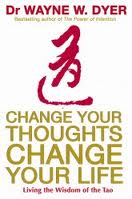
"it's vital that you spend a few moments each day getting to know your (and my) eternal Mother, which you can do by simply acknowledging her presence and silently communicating with her. Once you decide to know and honor her, you'll begin to change the way you look at all of her children, including yourself. You'll view all of the 10,000 things as offspring of The Mother, and you'll look beyond the temporariness of their appearances to see the Tao unfolding. This is what Lao-tzu means when he asks you to know the children not as separate from their Mother, but as The Mother herself. So see all of creation as originating in The Mother, and then 'go back and hold on to' her.”
Change Your Thoughts, Change Your Life: Living the Wisdom of the Tao
Wayne W. Dyer, Hay House (January 1, 2009) p. 254
“The Kundalini is your own mother; your individual mother. And She has tape-recorded all your past and your aspirations. Everything! And She rises because She wants to give you your second birth. But She is your individual mother. You don't share Her with anybody else. Yours is a different, somebody else's is different because the tape-recording is different. We say She is the reflection of the Adi Shakti who is called as Holy Ghost in the Bible.”
The Paraclete Shri Mataji
Press Conference, 1999—London, UK
Disclaimer: Our material may be copied, printed and distributed by referring to this site. This site also contains copyrighted material the use of which has not always been specifically authorized by the copyright owner. We are making such material available to our readers under the education and research provisions of "fair use" in an effort to advance freedom of inquiry for a better understanding of religious, spiritual and inter-faith issues. The material on this site is distributed without profit. If you wish to use copyrighted material for purposes other than “fair use” you must request permission from the copyright owner.